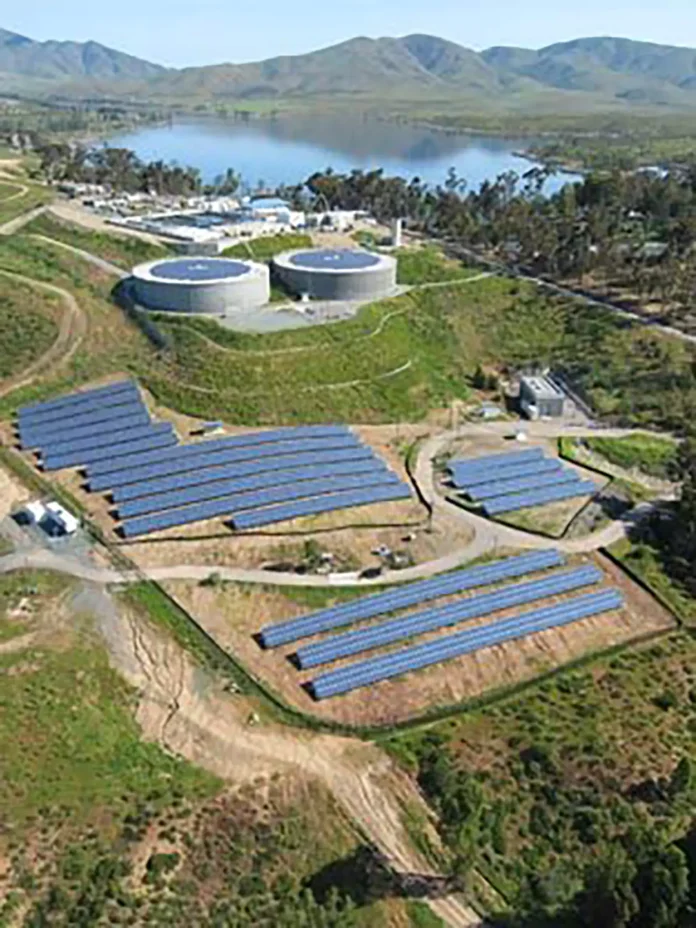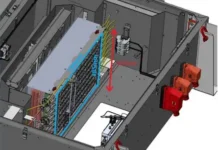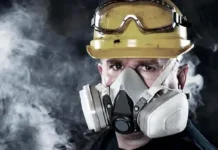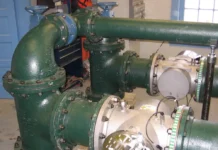Nicola Elardo, MS student, Department of Civil and Environmental Engineering, University of New Hampshire
James P. Malley, Jr., Ph.D., editor-in-chief, UV Solutions, professor of civil and environmental engineering, Department of Civil and Environmental Engineering, University of New Hampshire
Concerns over climate change reinvigorated the interest in waste minimization and pollution prevention that began in the 1970s and spurred innovations to reduce carbon footprint as well as water footprint for many technologies. This month’s survey questions focused on improving sustainability.
What steps have been taken to optimize energy use and reduce the carbon footprint of UV facilities?
Four wastewater utilities reported that their energy audits did not identify UV disinfection as one of the main energy users. Nevertheless, the following steps were noted:
- UV systems were flow paced so the minimum number of lamps needed to meet permitted coliform discharge limits were in operation at any given time.
- More efficient electrical components from transformers to ballasts were selected during replacement of the UV system at the end of its 15-year life.
- Renegotiation of discharge permits and increased E. coli monitoring allowed for periods of operation at reduced or no UV dosing, based upon seasonal variations in microbial levels and risk.
- Facilities have undergone major upgrades to allow the company to do biological nutrient removal (BNR), which has reduced the load on UV disinfection facilities. This allows more turndown, as well as savings on power, operations costs and maintenance expenses.
Four drinking water facilities indicated the following steps were taken:
- A change in system controls, allowing better UVT monitoring, and more responsive ballast power settings significantly reduced the power use of the medium-pressure UV lamp systems.
- Revalidating the UV system to obtain a more cost-effective operating range of flows, UVTs and lamp power settings had a payback period of about a year.
- Decisions were made to replace older UV technologies that had less energy-efficient lamps and limited ability to adjust dose (lamp power) with new UV lamp systems that used about 75% less power and had a broad range of lamp power adjustments.
- Power sources were switched to solar power panels on the UV building (and wind power for other treatment facilities), significantly reducing the carbon footprint of the energy used by the water treatment plant.
Responses were received from two facilities that use a UV-Hydrogen Peroxide AOP process:
- The facility has gone from annual to seasonal operations since monitoring suggested that the need for AOPs was seasonable. For the lower-flow, colder-temperature periods, the AOP system is scaled back to provide a UV disinfection barrier with much lower dose and no hydrogen peroxide feed.
- After several years of operations, process control charts were developed that looked at the life cycle assessment aspects of whether it was better to increase UV dose and decrease hydrogen peroxide dose or the opposite. Changes were made to more energy-efficient lamps, which reduced power use by 60% and resulted in an operating mode of higher UV doses and lower hydrogen peroxide feed rates. Overall, both power and chemical use were reduced.
What were the experiences with reducing the water footprint of facility operations?
The following comments came from staff at two wastewater treatment facilities after pointing out that, unlike other industries, water footprint means somewhat different things to them.
- Significant changes in the collection system occurred as major industrial contributors scaled back or closed outright. By shutting down regions of the collection system and by upgrading major collector sewers, the infiltration and inflow were reduced by 35%. Therefore, the facility treats less flow annually using lower power and fewer chemicals with less operation and maintenance.
- Stormwater coming into the system has been significantly reduced by the recent adoption of a stormwater management district, and this has resulted in less wear and tear on the UV facilities and the company’s other facilities, reducing costs and yielding greater sustainability.
Three drinking water facilities commented as follows:
- The facility works to strike a balance of encouraging water conservation while ensuring that drinking water demands are met in a cost-effective manner. Water conservation has resulted in energy savings by reducing the hours the UV disinfection and well-pumping stations are in operation annually.
- The utility has been working hard to meet water demands and develop new markets for water between consumer uses, industrial uses and cooling waters. Overall, the water footprint has been reduced by ensuring that users receive the quantity and quality of water that best fits their needs.
- Water conservation has been in full effect for about 10 years and has significantly reduced water footprint. Current information is not typical, due to the past 18 months of operating in a COVID-19 world where water use is way down and water age is way up, resulting in other types of issues.
Does the utility anticipate new sustainability initiatives or activities in the next five years?
Three larger water and sewer utilities reported the hiring of staff in recent years to focus on sustainable energy, systems analysis and/or life cycle assessment.
Five respondents indicated they anticipate further construction at their utilities of photovoltaic arrays on available and adjacent lands.
Two drinking water utilities indicated some of the issues with supply chain and an overall desire to reduce energy and chemical use have led them to hire consultants to make recommendations for improving the sustainability of their operations.
One utility anticipates the eventual infrastructure funding from the federal government will spur projects that combine infrastructure asset management with sustainability principles.
Contact: Nicola Elardo, nicola.elardo@unh.edu; James P. Malley, Jr., Ph.D., jim.malley@unh.edu






